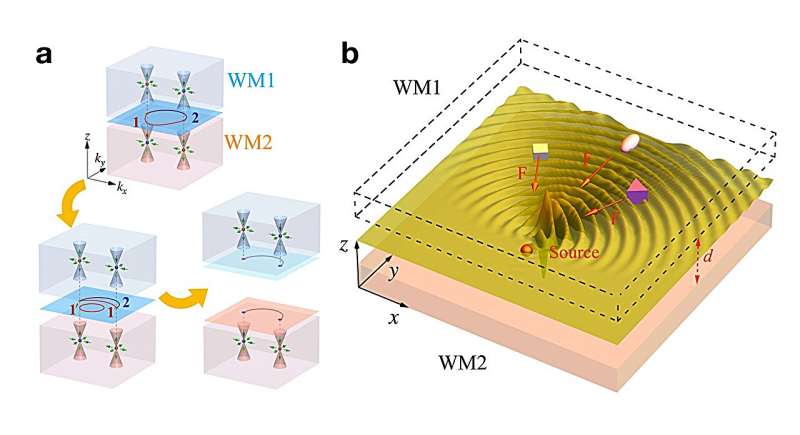Optical forces, which act like an invisible “hand,” are capable of precisely controlling tiny particles. Optical tweezers, a well-known tool, use this force to capture and manipulate small objects such as cells, bacteria, and viruses. This effect is based on the transfer of momentum from photons to particles—when light interacts with a particle, it generates enough force to move it. Arthur Ashkin’s development of optical tweezers earned him the Nobel Prize in Physics in 2018.
Typically, the momentum of photons creates a pushing force, driving particles forward. This concept was first predicted over 400 years ago by Johannes Kepler, who proposed the idea of a “solar sail” to utilize light’s pushing force for space exploration. However, the challenge lies in creating an optical pulling force, where light pulls particles toward its source. While optical tweezers can pull particles by focusing light beams, extending this pulling force over a broader area is a significant technical challenge.
In addition, the behavior of particles in a light field varies with their size, shape, and refractive index, making the precise control of optical force more difficult. Scientists have been seeking methods to generate a consistent optical pulling force that works across a wide range of particles.
A new paper published in Light: Science & Applications demonstrates a method to switch between optical pulling and pushing forces by altering the shape of Fermi arcs in topological photonic Weyl systems.
By adjusting the thickness of air layers between two Weyl materials with opposite topological charges, the research team from China discovered that the Fermi arc shape could be transformed from convex to concave. This transformation enables a continuous shift in photon momentum from positive to negative, producing a stable optical pulling force that is effective across various particle types, regardless of size, shape, or refractive index.
Through detailed full-wave simulations, the researchers confirmed the efficacy of this approach, highlighting the unique capabilities of concave Fermi arc waves in generating reliable optical pulling forces.
By adjusting the thickness of the air layer to achieve continuous changes in the Fermi arc shape, this technology opens up broad application prospects. In the future, scientists may use this technique to create stable, bidirectional particle transport channels, providing innovative platforms for precision experiments and advancing fields like nanomanufacturing, drug delivery, and microfluidics. Additionally, this cutting-edge technology also holds the potential for significant advancements in biosensors and environmental monitoring.
More information:
Yachao Liu et al, Continuous evolution of Fermi arcs in a minimal ideal photonic Weyl medium, Light: Science & Applications (2024). DOI: 10.1038/s41377-024-01632-w
Provided by
Chinese Academy of Sciences
Citation:
A method to switch between optical pulling and pushing forces by altering the shape of Fermi arcs in Weyl systems (2024, October 17)
retrieved 17 October 2024
from https://phys.org/news/2024-10-method-optical-fermi-arcs-weyl.html
This document is subject to copyright. Apart from any fair dealing for the purpose of private study or research, no
part may be reproduced without the written permission. The content is provided for information purposes only.

